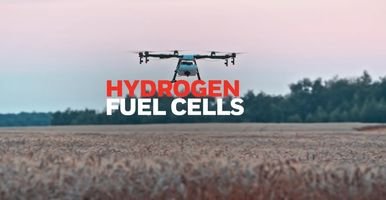Honeywell hydrogen fuel cells increase drones flight time
The new technology will increase the flight time for light drones by threefold.

Honeywell is developing a new technology suite using hydrogen fuel cells for light drones, which would increase the fly time three-fold.
Compared with traditional drones using batteries and line-of-sight radio links, drones equipped with Honeywell’s Beyond Visual Line of Sight (Bvlos) technologies can fly farther, carry more weight, avoid hazards up to 3 km away and stream video of their progress anywhere in the world.
Honeywell will use its 600-watt and 1200-watt hydrogen fuel cells in drones. The fuel cells in the Bvlos suite operate three times longer than batteries with equivalent output. They work silently and emit no greenhouse gases. The drones can be refuelled, or hydrogen tanks can be replaced in minutes.
Honeywell’s Bvlos systems are ideal for missions where distance or terrain interfere with radio links or visual guidance. Applications include last-mile package delivery, military intelligence, surveillance and reconnaissance, pipeline and power line inspection, search and rescue, or use by first responders.
Besides fuel cells, the Bvlos suite includes its RDR-84K multipurpose radar, inertial measurement units (IMUs), UAV Satcom (the world’s smallest and lightest satellite transceiver).
The radar can help avoid other aircraft, detect obstacles, map terrain, identify landing zones, and provide mapping for alternate navigation if GPS guidance fails.
The RDR-84K and fuel cells are in late-stage development, and prototype fuel cells are now available for purchase and evaluation.
Stéphane Fymat, VP and GM of Honeywell’s Unmanned Aerial Systems and Urban Air Mobility business unit, said, “These are technologies that businesses have been waiting for. They will help make drones profitable for a world of new applications.”
Sapan Shah, Product Manager for Honeywell’s Unmanned Aerial Systems and Urban Air Mobility business unit, said, “More time in the air, more awareness of surroundings and traffic, better connectivity: These are the building blocks of safe, profitable drone operations of all kinds, and that’s what we’re delivering.”
